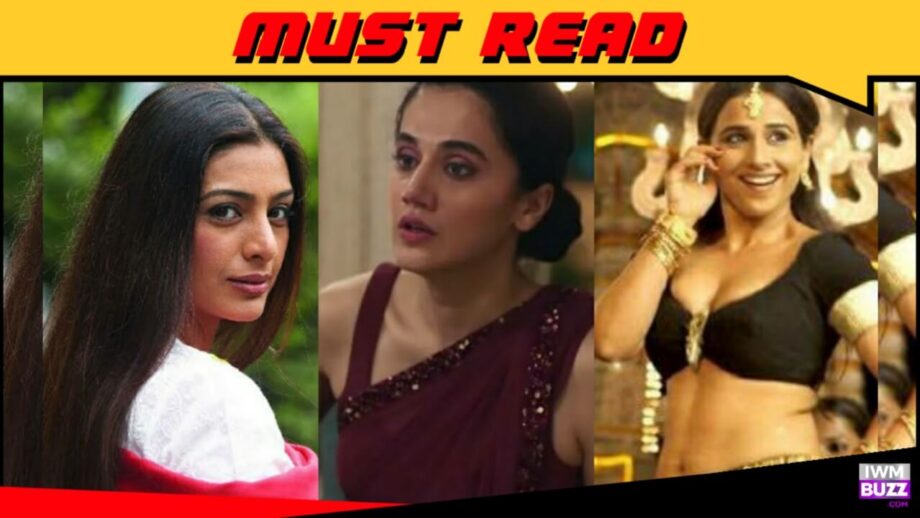It’s been from the entertainment autarky of the societal inputs into films, that have put in severe shifts and changes within the narratives of the storytelling. Almost fair to call it a metamorphosis of the characters drawn in between the lines. While we have witnessed a subjective change in concepts and base that the filmmakers work in, what we also noticed along that how they portrayed women (in every form, whether leading or passive) in the films, and we aren’t very happy with it.
Yes, it is true that we have seen a progressive mindset over the years, but it (patriarchy) still somewhere is existential in the very anatomy of the commercialisation of the scripts and making of the film. Inclusion of item numbers in a film to make it ‘sellable’ and more. However, we aren’t saying that there shouldn’t be sensuality; but there is this thin line between sensuality and objectification. And to curve it in very short we need less of ‘chikni chameli’ and more of ‘Aga Bai’ and films like ‘Aiyyaa’ starring Rani Mukherji.
It’s to mention, that it’s not just ‘Bollywood Films’, it’s there in Pan-Indian cinemas, and in Hollywood too. There is an array of films, where a woman character has just been put into to add on the ‘glamour’, or just to use as ‘props’ in the films; like RRR (Alia Bhatt), Baahubali (Tamannaah Bhatia), and there are countless to the list.
That’s not just it, the aspect of ‘Good Girl-Bad Girl’, ‘Good Wife-Bad Wife’, ‘Good mother-bad mother’ has also been very present in the films. Women in Bollywood films have always been layered into very peripheral, warped characters. For when it comes to women, the grey matter goes all ‘non-existent’. They are in the middle between conceals. From the very start of the portrayal of the mythological women characters, Indians have got this idea that women are bounded by lines, filled with values and should be into the curtain of ‘Abla Nari’.
For films like Deewar, Vivaah, Abhimaan, Cocktail, and more had the idea of ‘how perfect women should be’, carving them into characters like ‘wife’ ‘mother’ or ‘girlfriend’. In Deewar where we get this idea of a ‘giving mother’ always ready to serve her children; in Vivaah, the Sanskari ladki who fits in the right ‘Indian values’ getting painted as the ‘perfect good wife’. Then in Abhimaan, where we see a more talented wife than the husband, which ends up leaving the husband getting into inner conflicts and ego episodes, and then surprisingly the wife sacrifices her career to make her husband happy, making the wife a ‘good wife’. In Cocktail, a girl like Veronica is not the ‘wifey material’ or cannot be so! But what takes us aback, is that Veronica ends up believing that something is wrong with ‘her’ and vouches to fit into the societal norms.
‘Chak De India’ while serves its purpose with SRK’s grand performance, we aren’t very happy with the scriptwriting, that talks about how successfully a ‘women hockey team’ gets acclamation worldwide, but fails to climb upon the lives of the women players, and surrounds SRK and SRK only. Pyar Ka Punchnama sadly is absolutely a ‘misogynistic’ sketch of how ‘women’ are. Dilwale Dulhania Le Jaayenge shows how a woman can’t take her ‘own’ decisions at will, till her father allows and says ‘Jaa Simran Jaa Jee Le apni zindagi’.
However, the narrative changed for some of the leading filmmakers and ought to bring a different perspective in front of the audience. With films like, ‘Laga Chunari Mein Daag’, ‘No One killed Jessica’, ‘Dirty Picture’, ‘Astitva’, ‘Queen’, ‘Thappad’, ‘Cheeni Kum’, ‘Pink’, ‘Aiyyaa’, Mardaani, ‘Lipstick Under My Burkha’ and others.
With these films, the audience got to see women in different other roles and characters on the screen; strong, self-sufficient and dauntless. However sadly, these above films are named ‘Feminist Films’, we don’t call these names when it comes to the other side of the table! Do we? Well, that’s exactly where we need to rectify.
But to really draw an inference in regard to the feminine gender, and its portrayal in the Indian cinema becomes a bit difficult. Films in India need to make a discrete and autonomous space for the women to realise that their deadlocks, impasse and emotional encounters are absolutely normal and ‘humane’, and not use them just as objects of the endless ‘male gaze’.

